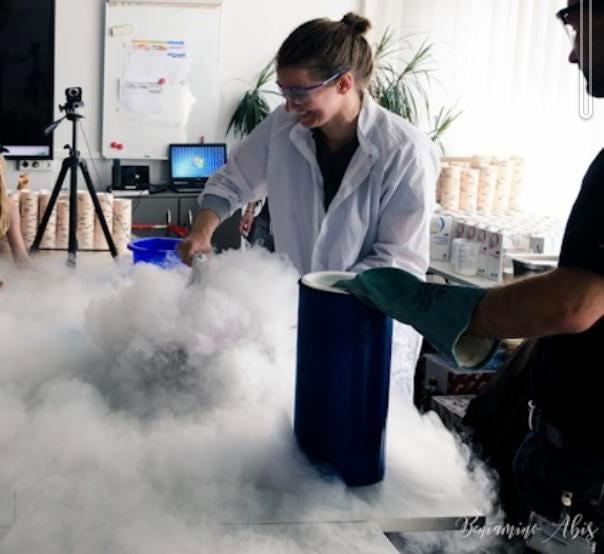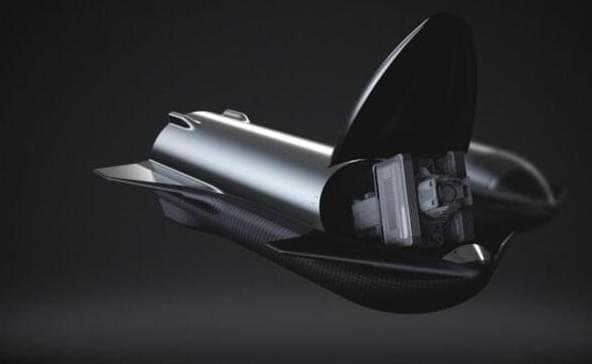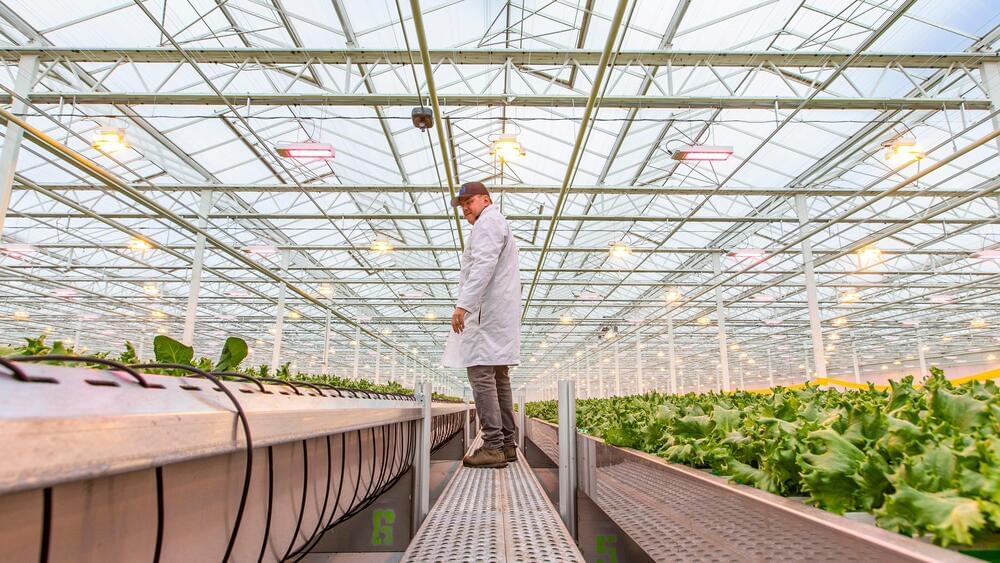
Category: sustainability – Page 380


How Lecturers Without Borders Shares The Joy Of Science
If you are a scientist, willing to share your science with curious teens, consider joining Lecturers Without Borders!
Established by three scientists, Luibov Tupikina, Athanasia Nikolau, and Clara Delphin Zemp, and high school teacher Mikhail Khotyakov, Lecturers Without Borders (LeWiBo) is an international volunteer grassroots organization that brings together enthusiastic science researchers and science-minded teens. LeWiBo founders noticed that scientists tend to travel a lot – for fieldwork, conferences, or lecturing – and realized scientists could be a great source of knowledge and inspiration to local schools. To this end, they asked scientists to volunteer for talks and workshops. The first lecture, delivered in Nepal in 2017 by two researchers, a mathematician and a climatologist, was a great success. In the next couple of years, LeWiBo volunteers presented at schools in Russia and Belarus; Indonesia and Uganda; India and Nepal. Then, the pandemic forced everything into the digital realm, bringing together scientists and schools across the globe. I met with two of LeWiBo’s co-founders, physicist Athanasia Nikolaou and math teacher Mikhail Khotyakov, as well as their coordinator, Anastasia Mityagina, to talk about their offerings and future plans.
Julia Brodsky: So, how many people volunteer for LeWiBo at this time?
Anastasia Mityagina: We have over 200 scientists in our database. This year alone, volunteers from India, Mozambique, Argentina, the United States, France, Egypt, Israel, Brazil, Ghana, Nigeria, Ethiopia, Botswana, Portugal, Croatia, Malaysia, Spain, Colombia, Italy, Germany, Greece, Denmark, Poland, the United Kingdom, Austria, Albania, Iran, Mexico, Russia, and Serbia joined us. Their areas of expertise vary widely, from informatics, education, and entrepreneurship, to physics, chemistry, space and planetary sciences, biotechnology, oceanography, viral ecology, water treatment, nanotechnology, artificial intelligence, astrobiology, neuroscience, and sustainability. We collaborate with hundreds of schools, education centers, and science camps for children in different parts of the world. In addition, our network includes more than 50 educational associations in 48 countries that help us reach out to approximately 8,000 schools worldwide.

Coupling photovoltaics with thermoelectric cooling
The RVFL was used in combination with four different techniques: the Jellyfish Search Algorithm (JFSA); the Artificial Ecosystem-based Optimization (AEO); the Manta Ray Foraging Optimization (MRFO) model; and the Sine Cosine Algorithm (SCA). Through the four models, the academics assessed the PV-fed current, the cooling power, the average air chamber temperature, and the coefficient of performance (COP) of a PV-powered STEACS for air conditioning of a 1m3 test chamber under diversified cooling loads varying from 65 to 260W.
The system was built with six solar panels, an air duct system, four batteries, a charge controller, TECs, an inverter, heat sinks, a test chamber, and condenser fans. “The TECs were mainly connected with the air duct arrangement and placed close to each other [and] were placed between the air duct and heat sinks,” the researchers explained. “When direct PV current was fed to TECs arranged on the sheet of the air duct system, one face [became] cold, defined as a cold air duct, and another side [became] hot, called “hot air.” The air ducts were composed of an acrylic enclosure wrapped with a protection sheet.”


SpaceX’s Starship Will Be Capable Of Capturing Satellites To Be Repaired In Orbit Or Returned To Earth
SpaceX’s Starship will be a multipurpose launch vehicle, capable of returning astronauts to the Moon to build a permanent base and enabling humanity to build a sustainable colony on Mars. It is expected to become the world’s most powerful rocket-ship. “Starship was designed from the onset to be able to carry more than 100 tons of cargo to Mars and the Moon. The cargo version can also be used for rapid point-to-point Earth transport. Various payload bay configurations are available and allow for fully autonomous deployment of cargo to Earth, Lunar, or Martian surfaces,” the company said.
SpaceX’s Starship launch vehicle has many potential uses and capabilities that will enable access to space like never before. The cargo version of Starship will be able to launch entire satellite constellations in a single launch inside its payload bay. For perspective, SpaceX’s Falcon 9 can carry up to 60 Starlink in a tight configuration inside its 5.2-meter diameter fairing, Starship will be able to carry 400 Starlink to deploy in a single launch inside its fairing. Starship will be capable of deploying giant spacecraft to space inside its clamshell-like fairing, which has an outer diameter of 9-meters –“the largest usable payload volume of any current or in development launcher,” the company says. SpaceX also plans to design an extended Starship volume capability for payloads requiring up to 22-meters of height.
Starship will also be able to capture already in orbit to be repaired or brought back to be disposed of on Earth, according to SpaceX’s Starship User Guide. “Fully-reusable Starship and Super Heavy systems are expected to allow for space-based activities that have not been possible since the retirement of the Space Shuttle and Space Transportation System, or have never been possible before. With a fully reusable Starship, can be captured and repaired in Orbit, returned to Earth, or transferred to a new operational orbit,” SpaceX’s vehicle guide says. This will be possible with Starship’s large clamshell-like cargo door mechanism that opens and closes, as shown in the image below. The clamshell door can be modified to “chomp up” old and space junk orbiting Earth. “We can fly Starship around space and chomp up debris with the moving fairing door,” SpaceX founder Elon Musk said in July 2021.

Harley-Davidson’s latest LiveWire electric motorcycle is more affordable
Circa 2021
When Harley-Davidson debuted its first electric motorcycle back in 2019, it was held back by an expensive price tag and early production issues. After spinning out LiveWire as a separate brand earlier this year, the company is back with its second electric bike, and it looks to address those issues.
The most eye-catching feature of Harley-Davidson’s new LiveWire One is its price tag. The electric motorcycle will cost $21,999. That’s almost $8,000 less than the $29,799 the original LiveWire sold for when it came out in 2019. With federal subsidies, Harley-Davidson told The Verge it expects most people will be able to buy the LiveWire One for less than $20,000.
But a more attractive entry point isn’t the only change. Harley-Davidson has also improved the motorcycle’s range. Driving on slower city streets, the company claims the LiveWire One can travel 146 miles on a single charge. By comparison, its predecessor was limited to a maximum of about 110 city miles. Using a DC fast charger, the company says you can get the LiveWire One’s battery from dead to a full charge in about an hour, or from zero to 80 percent in approximately 45 minutes. The motorcycle also comes with a six-axis inertial measurement unit to assist with braking and turns.

Proposals could give South Bend one of the largest indoor farming campuses in the Midwest
SOUTH BEND — The city council gave a unanimously positive recommendation Monday night for two tax abatements that could put South Bend at the epicenter of the hydroponic produce market in Indiana, and possibly the Midwest, for years to come.
JEM Farms South Bend plans to spend as much as $178 million on greenhouses and logistical equipment to grow tomatoes and strawberries throughout the year on land at Calvert Street and Renewable Drive, adjacent to the South Bend Ethanol Plant.
That facility would be located on land owned by Ceres Partners, the agricultural investment group located just south of the University of Notre Dame campus and the original investors in Pure Green Farms.
‘LUNAR ARK’: Scientists plan to build Noah’s Ark on the Moon to protect Earth’s biodiversity
A team of researchers from the University of Arizona has proposed a “Lunar Ark” for preserving samples of 6.7 million Earth species in the event of a global crisis.
Be the first to know about the latest updates on COVID-19 pandemic, lockdowns, community quarantine, new normal, and Serbisyong Bayanihan.
We Serve the People. We Give Glory To God!
#SerbisyongBayanihan #UNTVNewsandRescue #LagingHandaPH
For news update, visit: https://www.untvweb.com/news/
Check out our official social media accounts:
https://www.facebook.com/UNTVNewsRescue.
https://www.twitter.com/untvnewsrescue.
https://www.youtube.com/untvnewsandrescue.
Instagram account — @untvnewsrescue.

Coming fast-charging stations mark important step in EV infrastructure
Until recently, charging your electric vehicle at a public charging station was sort of like a full-time job. Although the charging time varies, the average time required to fully charge an electric vehicle (EV) at those stations is eight hours.
That’s changing — and rapidly, you might say.
On Monday, Starkville Utilities Department announced it will be adding two fast-charging EV stations, one downtown near its office and another near the Starkville Sportsplex.
California’s “Lithium Valley” on the rise
Long a hub of geothermal power production, a forgotten backwater of Southern California known as the Salton Sea, is a bountiful reservoir of lithium, is being dubbed “Lithium Valley.” The silvery-white metal is now in huge demand as it is used in electric vehicle batteries. Ben Tracy reports.
Each weekday morning, “CBS Mornings co-hosts Gayle King, Tony Dokoupil and Nate Burleson bring you the latest breaking news, smart conversation and in-depth feature reporting. “CBS Mornings” airs weekdays at 7 a.m. on CBS and 8 a.m. ET on CBSN.
Watch CBSN live: http://cbsn.ws/1PlLpZ7c
Download the CBS News app: http://cbsn.ws/1Xb1WC8
Follow “CBS Mornings” on Instagram: https://bit.ly/3A13OqA
Like “CBS Mornings” on Facebook: https://bit.ly/3tpOx00
Follow “CBS Mornings” on Twitter: https://bit.ly/38QQp8B
Try Paramount+ free: https://bit.ly/2OiW1kZ
For video licensing inquiries, contact: [email protected]